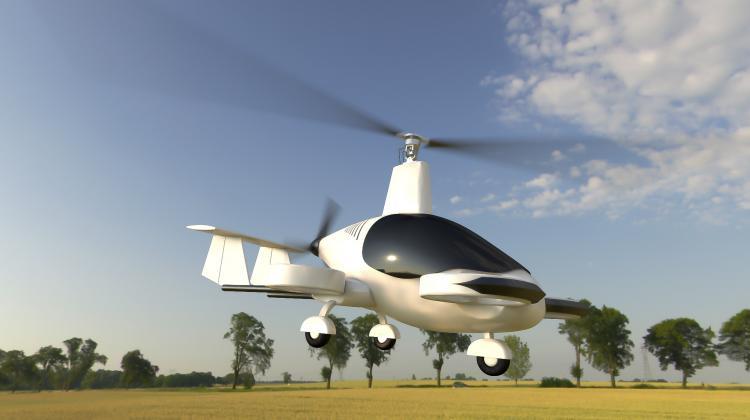Next generation of unmanned aircraft is being built at the Lublin University of Technology
 Fig. press materials
Fig. press materials
The next generation unmanned aerial vehicle project will continue for three years The aircraft combines gyroplane and multi-rotor features, announced scientists from the Lublin University of Technology.
According to the authors, the new type of machine called SafeGyro will be economical in use and safe, as well as capable of performing tasks previously reserved for conventional air machines.
"Combining the advantages of a gyroplane as a light, simple, cheap to operate machine, with a multi-rotor assembly enabling vertical take-off and landing, will allow to design an aircraft with completely new properties" - argues the project leader, Dr. Zbigniew Czyż from the Department of Thermodynamics, Fluid Mechanics and Aviation Propulsion of the Lublin University of Technology.
Another advantage of the aircraft, Dr. Czyż emphasizes, will be a relatively low price compared to an unmanned helicopter with similar take-off mass.
The classic gyroplane propulsion system will be supported by additional electric motors with propellers with an adjustable thrust vector. This drive will be used mainly for flight safety, especially over built-up areas, and optimal power management. The multi-rotor propulsion will allow for vertical take-off.
SafeGyro will be capable of several ways of landing: like a classic gyroplane, without the need for additional rotors. It will also be possible to use the multi-rotor drive only. The researchers emphasize that, given the different landing methods and two independent propulsion systems that generate lift, the device is expected to be safer than competing solutions.
The new aircraft will use electric propulsion.
Czyż mentions various potential uses of the device: uniformed services can use it for observation and reconnaissance purposes, for patrolling and scanning the protected area, including fire protection of forests, and for aerial support of rescue operations and monitoring mass events. The aircraft is also expected to be an ideal tool for inspecting roads, railways and buildings.
"In addition, it is possible to use it for the rapid transport of small loads, for example medical or military equipment, as well as monitoring the condition of the environment in a given area in terms of air pollution, monitoring protected green areas and water reservoirs, and the condition of crops in agriculture" - says Dr. Zbigniew Czyż.
Work on the project will take 3 years. Its cost is nearly PLN 1.5 million. Funds for this purpose were granted by the National Centre for Research and Development.
A model of multi-rotor aircraft with a 1.1 m rotor has already been built and tested in the wind tunnel at the Institute of Aviation in Warsaw.
PAP - Science in Poland
szz/ ekr/ kap/
tr. RL
Przed dodaniem komentarza prosimy o zapoznanie z Regulaminem forum serwisu Nauka w Polsce.















